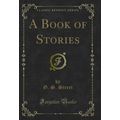Bird - Lapwing or Peewit - Shetland Times postcard
- Condition : Used
- Dispatch : 2 Days
- Brand : None
- ID# : 150077829
- Quantity : 1 item
- Views : 586
- Location : United Kingdom

- Seller : justthebook (+1704)
- Barcode : None
- Start : Mon 04 Jul 2016 20:11:46 (BST)
- Close : Run Until Sold
- Remain : Run Until Sold
More Listings from This Seller view all
Seller's Description
- Postcard
- Picture / Image: Lapwing or Peewit
- Publisher: Shetland Times Ltd., Lerwick
- Postally used: no
- Stamp: n/a
- Postmark(s): n/a
- Sent to: n/a
- Notes / condition:
Please ask if you need any other information and I will do the best I can to answer.
------------------------------------------------
Postage & Packing:
UK (incl. IOM, CI & BFPO): 99p
Europe: £1.60
Rest of world (inc. USA etc): £2.75
No additional charges for more than one postcard. You can buy as many postcards from me as you like and you will just pay the fee above once. (If buying postcards with other things such as books, please contact or wait for invoice before paying).
Payment Methods:
UK - PayPal, Cheque (from UK bank) or postal order
Outside UK: PayPal ONLY (unless otherwise stated) please. NO non-UK currency checks or money orders (sorry).
NOTE: All postcards are sent in brand new stiffened envelopes which I have bought for the task. These are specially made to protect postcards and you may be able to re-use them. In addition there are other costs to sending so the above charge is not just for the stamp!
I will give a full refund if you are not fully satisfied with the postcard.
----------------------------------------------
Text from the free encyclopedia WIKIPEDIA may appear below to give a little background information (internal links may not work) :
*************
The Northern Lapwing (Vanellus vanellus), also known as the Peewit, Green Plover or (in the British Isles) just Lapwing, is a bird in the plover family. It is common through temperate Eurasia. It is highly migratory over most of its extensive range, wintering further south as far as north Africa, northern India, Pakistan, and parts of China. It migrates mainly by day, often in large flocks. Lowland breeders in westernmost areas of Europe are resident. It occasionally is a vagrant to North America, especially after storms, as in the Canadian sightings after storms in December 1927 and in January 1966.[2]
It is a wader which breeds on cultivated land and other short vegetation habitats. 3 – 4 eggs are laid in a ground scrape. The nest and young are defended noisily and aggressively against all intruders, up to and including horses and cattle.
In winter it forms huge flocks on open land, particularly arable land and mud-flats.
The Northern lapwing is a 28–33 cm (11–13 in) long bird with a 67–87 cm (26–34 in) wingspan and a body mass of 128–330 g (4.5–12 oz).[3] It has rounded wings and a crest. It is the shortest-legged of the lapwings. It is mainly black and white, but the back is tinted green. The male has a long crest and a black crown, throat and breast contrasting with an otherwise white face. Females and young birds have shorter crests, and have less strongly marked heads, but plumages are otherwise quite similar.
The name lapwing has been variously attributed to the ""lapping"" sound its wings make in flight, from the irregular progress in flight due to its large wings (OED derives this from an Old English word meaning ""to totter""), or from its habit of drawing potential predators away from its nest by trailing a wing as if broken. This is a vocal bird in the breeding season, with constant calling as the crazed tumbling display flight is performed by the male. The typical contact call is a loud, shrill ""pee-wit"" from which they get their other name of Peewit. Displaying males usually make a wheezy ""pee-wit, wit wit, eeze wit"" during their display flight, these birds also make squeaking or mewing sounds.
It feeds primarily on insects and other small invertebrates. This species often feeds in mixed flocks with Golden Plovers and Black-headed Gulls, the latter often robbing the two plovers, but providing a degree of protection against predators.
Like the Golden Plovers, this species prefers to feed at night when there is moonlight.
The Northern Lapwing is one of the species to which the Agreement on the Conservation of African-Eurasian Migratory Waterbirds (AEWA) applies.
type=printed postcards
theme=animals
sub-theme=birds
number of items=single
period=1945 - present
postage condition=unposted
Listing Information
| Listing Type | Gallery Listing |
| Listing ID# | 150077829 |
| Start Time | Mon 04 Jul 2016 20:11:46 (BST) |
| Close Time | Run Until Sold |
| Starting Bid | Fixed Price (no bidding) |
| Item Condition | Used |
| Bids | 0 |
| Views | 586 |
| Dispatch Time | 2 Days |
| Quantity | 1 |
| Location | United Kingdom |
| Auto Extend | No |




 for 1 item(s)
for 1 item(s)

















